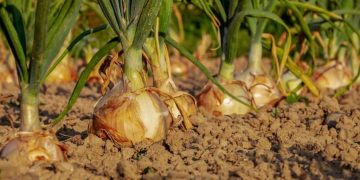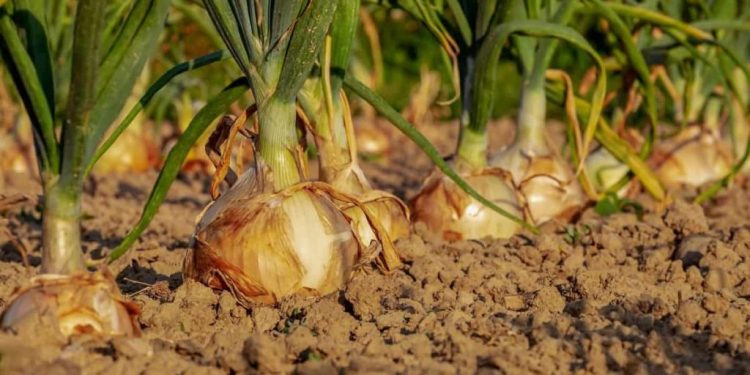Onion is one of the most popular cultivated vegetable species. Onion belongs to the Amaryllidaceae family. Onion is a bulbous plant with bulbs and semi-cylindrical or tubular leaves with a waxy coating on the surface. Maharashtra, Madhya Pradesh, Karnataka, Gujarat, Rajasthan, Bihar, Andhra Pradesh, Haryana, West Bengal, Uttar Pradesh, Chhattisgarh, Odisha, Tamil Nadu, Jharkhand, and Telangana are the major Onion producing states in India.
Best season to grow Onions at home in India
Onion growing time in India
India is the second largest Onion cultivating country in the world. Indian Onion varieties are famous for their pungency and are available throughout the year. Indian Onion has two crop cycles; the first harvest starts from November to January, and the second harvest from January to May.
Onion is a hardy cool-season biennial but is commonly grown as an annual crop. Onions have narrow, hollow leaves and a base that enlarges to form a bulb. The bulb can be white, yellow, or red and takes 80 to 150 days to reach harvest. Onion is usually grown only once a year in many states but not in Maharashtra.
Three crops are harvested in a year in the largest Onion producing state. Due to this, the Onion prices in the country are usually fixed from here. It is grown here in Kharif, post-Kharif, and Rabi seasons. In the Kharif season, Onion sowing is done in the month of July-August, which is going on in many districts of Maharashtra these days. Onion crops sown in the Kharif season will reach the market in October-December.
Spring/Summer Onion features
- Available in yellow, red, and white from March to August.
- Recognizable by their thin, light-colored skin.
- They usually have a high water content, which shortens their shelf life and makes them more susceptible to injury.
- Sweet to mild flavor, best used in salads, sandwiches, and fresh, lightly cooked, or grilled dishes.
- Many specialty sweet Onions are part of this category and are sold under a specific trade name. Some domestic and imported Onion varieties with these characteristics are offered at other times of the year.
Autumn/Winter Onion features
- Available from August to May in yellow, red, and white.
- They are easy to find by their multiple layers of thick, dark-colored skin.
- Usually low in water content, they have a long shelf life.
- Mild to spicy in flavor, perfect for savory dishes that require more cooking time or flavor.
Recommended varieties for different seasons and regions of the country
| Varieties | Season & Region |
| Bhima Super | Kharif – Madhya Pradesh, Maharashtra, Odisha, Punjab, Rajasthan, Chhattisgarh, Delhi, Haryana, Karnataka, Gujarat, and Tamil NaduLate Kharif – Gujarat, Karnataka, and Maharashtra |
| Bhima Red | Kharif – Haryana, Karnataka, Delhi, Gujarat, Maharashtra, Punjab, Rajasthan, and Tamil NaduLate Kharif – Gujarat, Karnataka, and MaharashtraRabi – Madhya Pradesh and Maharashtra |
| Bhima Dark Red | Kharif – Madhya Pradesh, Maharashtra, Odisha, Punjab, Rajasthan, Haryana, Karnataka, Chhattisgarh, Delhi, Gujarat, and Tamil Nadu |
| Bhima Raj | Kharif – Gujarat, Karnataka, and MaharashtraLate Kharif – Gujarat, Karnataka, and MaharashtraRabi – Delhi, Gujarat, Haryana, and Rajasthan |
| Bhima Shakti | Late Kharif – Gujarat, Karnataka, and MaharashtraRabi – Andhra Pradesh, Bihar, Chhattisgarh, Delhi, Gujarat, Haryana, Karnataka, Madhya Pradesh, Maharashtra, Rajasthan, Odisha, Punjab, and Uttar Pradesh |
| Bhima Light Red | Rabi – Karnataka and Tamil Nadu |
| Bhima Kiran | Rabi – Andhra Pradesh, Bihar, Delhi, Haryana, Karnataka, Maharashtra, Punjab, and Uttar Pradesh |
| Bhima Shubra | Kharif – Madhya Pradesh, Maharashtra, Chhattisgarh, Gujarat, Karnataka, Odisha, Rajasthan, and Tamil NaduLate Kharif – Maharashtra |
| Bhima Shweta | Kharif – Madhya Pradesh, Maharashtra, Chhattisgarh, Gujarat, Karnataka, Odisha, Rajasthan, and Tamil NaduRabi – Andhra Pradesh, Bihar, Chhattisgarh, Delhi, Haryana, Karnataka, Madhya Pradesh, Maharashtra, Orissa, Punjab, and Uttar Pradesh |
| Bhima Safed | Kharif – Karnataka, Madhya Pradesh, Chhattisgarh, Gujarat, Maharashtra, Odisha, Rajasthan, and Tamil Nadu |
Climate requirement and crop rotation time for best Onion cultivation
Being a shallow-rooted crop, efficient and maximum utilization of all available soil mineral nutrients is impossible. Unused nutrients will leach out and settle into the subsoil. Planting leguminous crops in the next growing season will ensure the use of these nutrients. Thus, Onion and legume cropping sequence is recommended for maintaining soil health, optimum utilization of nutrients, and high yield.
In case you missed it: Onion Farming in Polyhouse for Maximum Profits
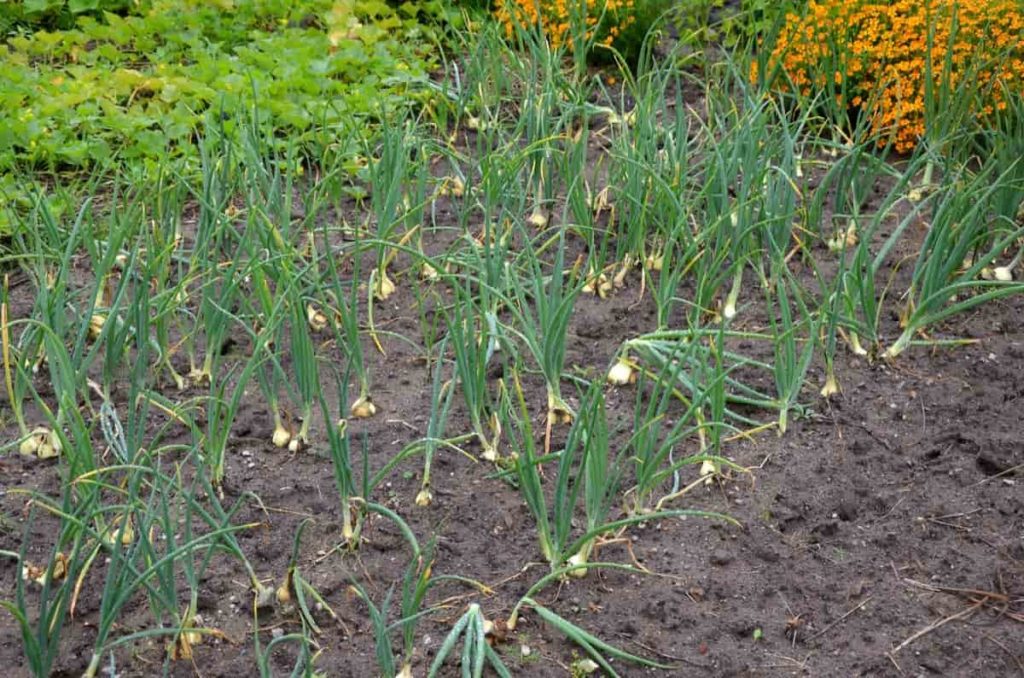
Onion cultivation is best possible in subtropical, temperate, and tropical climates. Simply put, a mild climate that is not too rainy, too cold, or too hot is ideal for growing Onions. However, Onion cultivation is done in a specific season for better results. For example, Onion bulbs are planted in winter, further cultivated in late winter, and harvested before the onset of summer.
Bets time to start Onion seeds indoors and outdoors
- In the spring season, as soon as the ground can be worked, plant Onions outdoors, usually in late March or April, when temperatures are unlikely to drop below -2°C.
- In the spring, start Onion seeds indoors (once the soil is at least 10°C) about six weeks before planting in the ground.
- A fall-planted crop of Onions needs at least 4 to 6 weeks of warm temperatures to get established in the ground. They will go dormant in cold weather, but in early spring, the bulbs revive as temperatures and soil warm again.
- Onions can grow in almost all types of soil. Generally, the seeds are sown in the nursery, and the plant is transplanted after about 30-40 days. Before transplanting, the field should be plowed properly to get rid of soil clods and unwanted debris. Vermicomposting (about 3 tons per acre) or poultry manure can be added. It is done during final plowing.
- After plowing, fields are leveled, and beds are prepared. Depending on the season, beds can be flat or wide beds. Flatbeds are 1.5-2 meters wide and 4-6 meters long. Wide beds have a height of 15 cm and a top width of 120 cm. The depth of the furrows is 45 cm to achieve the correct spacing. Onion is grown in wide-bed furrows during the Kharif season as it is easy to drain excess water out of the furrows. It also facilitates aeration and reduces the incidence of anthracnose disease. If Onions are cultivated in the Rabi season, flat beds are made. Flatbeds for Kharif can cause waterlogging.
Three sowing seasons for Onion crop
Karnataka, Maharashtra, and Andhra Pradesh are the major Onion growing states in Kharif, while Rajasthan, Haryana, Madhya Pradesh, Gujarat, and Uttar Pradesh are the five non-traditional Onion growing states. Kharif Onion area in Rajasthan may be increased to 24,500 hectares this year from 22,295 hectares in the same season last year.
Kharif Onion area can be increased from 7,250 hectares to 10,000 hectares in Haryana and 5,000 to 5,500 hectares in Gujarat. Similarly, the kharif Onion area in Madhya Pradesh may increase from 4,729 hectares a year ago to 6,500 hectares this year. In contrast, in Uttar Pradesh, it may increase from 4,000 to 4,500 hectares.
There are three sowing seasons for the Onion crop in India
- Kharif (planted between July-August and harvested in October-December);
- Late Kharif (planted between October-November and harvested in January-March); and
- Rabi (planted between December-January and harvested in March-May).
Rabi 70%, Kharif 20%, and Late Kharif 10% share the total Onion production. Sowing is an important process for Onion cultivation as any change in seed rate, time of sowing, and method of sowing can significantly reduce the yield. So, care should be taken to adopt proper sowing practices. The best time for raising the nursery is between the months of mid-October to November. Plants are ready for transplanting from mid-December to mid-January. Select healthy plants of 10-15 cm height for transplanting.
In case you missed it: Onion Cultivation Income, Project Report, Yield, Profits
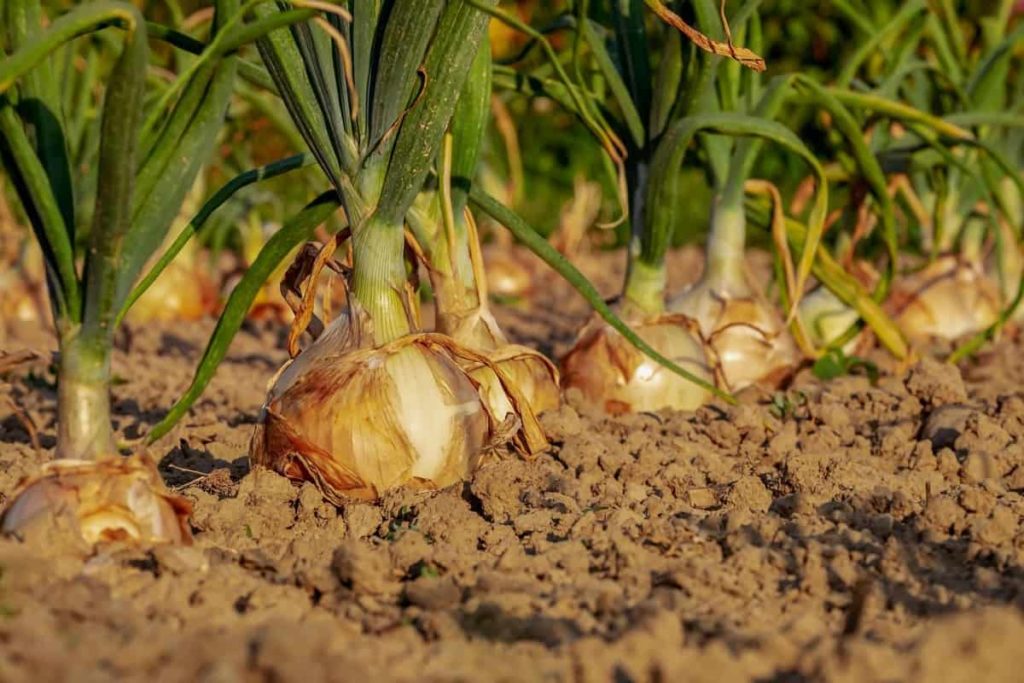
In Maharashtra, the seed for the early Kharif crop is sown in nurseries in early June and transplanted by late July. In contrast, normal Kharif Onion seed is sown in nurseries in late August and transplanted in mid-October.
Planting time for Onion crop in India
Onions are a cool-season crop, and temperatures can stay below freezing. They can be planted from seeds, small bulbs called sets or transplants. Planting seeds costs less, but Onions take longer to mature. When planting Onions for bulbs, plant them ¼ inch deep from October through December.
Space the seeds 1 inch apart. When the Onion plants are about 6 inches tall, thin them to one plant every 2 to 3 inches. Eat extra greens like green Onions. If you use sets or transplants, plant them ¾ inch deep and 3 inches apart (Photo 1). Plant Onions no deeper than 1 inch.
Raising seedlings and transplanting time to grow Onions
It is the standard technique for irrigated cropping because it results in higher yields and larger bulb sizes. In the plains, seeds are sown during October-November for the Rabi crop. In the hills, the seeds are sown from March to June. The seeds are first sown in well-prepared nursery beds of 90-120 cm in width, 7.5-10.0 cm in height, and appropriate length. The nursery area and main field ratio are about 1:20.
The seed rate ranges from 8 to 10 kg per hectare. Plants with about 15 cm height and 0.8 cm neck diameter are good for transplanting, and this is achieved in aroud 8 weeks. However, it varies from 6-10 weeks depending on the soil, climate, and rainfall. It is customary to top the plants when transplanting if they are overgrown.
Summer / Rabi Onion Cultivation
Summer / Rabi Onions are generally used for irrigated cropping, resulting in higher yields with larger-sized bulbs. Seedlings are first grown in the nursery. October to November is recommended as sowing time for India’s summer/Rabi crop.
In Maharashtra, it is transplanted from November to December. About 10 to 12 Kg of Onion seed is required to raise seedlings for one-hectare transplanting. The seeds are ready for transplanting 45-60 days after sowing. Over-aged seedlings tend to bolt, taking longer to initiate new growth. Spacing 15 x 10 cm. (plant to row) is recommended for maximum population and high yield.
Rabi is the only Onion crop that is storable due to low humidity. Rabi season Onion sowing has started in Maharashtra, the largest Onion producer. Rabi season Onion cultivation has almost started in several districts of Marathwada, which have been worst affected by heavy rains. Three crops of Onion are grown in Maharashtra. It is cultivated in the early Kharif, Kharif, and Rabi seasons.
Onion sowing in the Rabi season starts in October and November and continues till January. It takes about four months to produce this season’s Onions. That is, it is ready between February and March. As per Rabi season, Onion seed sowing by some people, it comes out till April-May. Similarly, early Kharif is the seed sown in June-July and reaches till November.
Kharif season Onions are sown in August and September, which fall between December and January. But storage of both of them is not possible. Stocking is done only for Rabi season Onions. About 65% of Maharashtra’s total Onion production is during the Rabi season. Nashik, Pune, Solapur, Jalgaon, Dhule, Aurangabad, Beed, Osmanabad, Ahmednagar, and Satara districts are famous for Onion farming.
In case you missed it: Onion Seed Germination, Time, Temperature, Procedure
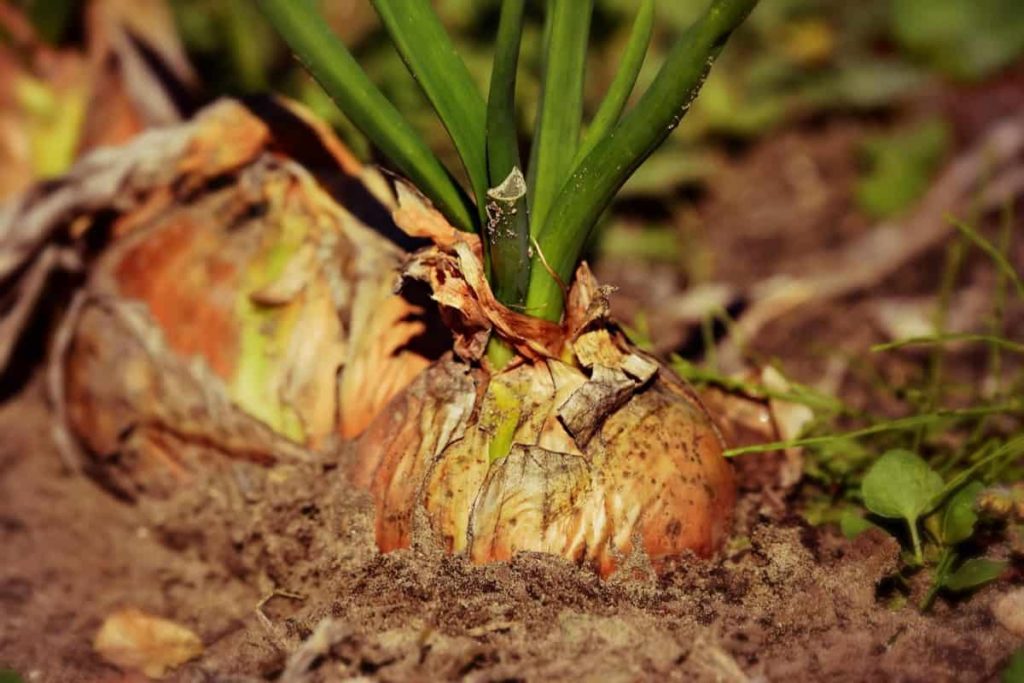
In the Rabi season, Onions are planted as soon as winter begins. After 1 to 2 months of planting, the weather becomes cool. An increase in temperature during the flowering period of Onion is considered favorable for its harvest. Onions thrive in medium to loamy soil with good drainage and are rich in organic matter. Applying 40 to 50 tonnes of indigenous manure per hectare to this land will increase the yield.
Good Onion varieties for the rabi season
Baswant 780: This Onion variety is suitable for Kharif and Rabi season and has deep red color. These Onions grow in size in the middle of the month. This type of plant matures in 100 to 120 days. The crop yield per hectare is about 250 to 300 quintals.
N-2-4-1: This Onion variety is suitable for Rabi season and has a saffron color. Onions are medium round in shape and keep very well in storage. This Onion variety matures in 120 to 130 days. The Onion yield per hectare is 300 to 350 quintals. 10 kg seed per hectare is sufficient.
Onion growing in Kharif season
A Kharif crop generally requires 5-8 irrigations. The best Onion varieties for the Kharif season are;
Bhima Super: A red Onion variety is grown in the Kharif season in Chhattisgarh, Delhi, Gujarat, Haryana, Karnataka, Maharashtra, Rajasthan, Odisha, Madhya Pradesh, Punjab, and Tamil Nadu. Its average yield in Kharif is 20 – 22 tonnes per hectare, and in late Kharif, 40 – 45 tonnes per hectare.
Bhima Dark Red: This Onion variety for Kharif season in Chhattisgarh, Delhi, Gujarat, Haryana, Karnataka, Madhya Pradesh, Maharashtra, Odisha, Punjab, Rajasthan, and Tamil Nadu.
Bhima Red: This variety is already recommended for Rabi season in Maharashtra and Madhya Pradesh; it is also recommended for Kharif season in Delhi, Gujarat, Haryana, and Karnataka, Maharashtra, Punjab, Rajasthan, and Tamil Nadu.
Bhima Shweta: This variety is recommended for Rabi season and Kharif in Chhattisgarh, Gujarat, Karnataka, Madhya Pradesh, Maharashtra, Odisha, Rajasthan, and Tamil Nadu.
Bhima Shubhra: This white Onion variety is recommended for the Kharif season for Chhattisgarh, Gujarat, Karnataka, Madhya Pradesh, Maharashtra, Odisha, Rajasthan, and Tamil Nadu. It is recommended for late Kharif in Maharashtra.
Fertilizer requirements for growing Onion crops in different seasons
- Kharif season Onion – 100:50:50:50 kg NPKS/ha
- Late kharif Onion – 150:50:50:50 kg NPKS/ha
- Rabi season Onion – 150:50:80:50 kg NPKS/ha
In case you missed it: Top 18 Steps/Ways to Boost Onion Yield: How to Increase Production, Size, and Quality
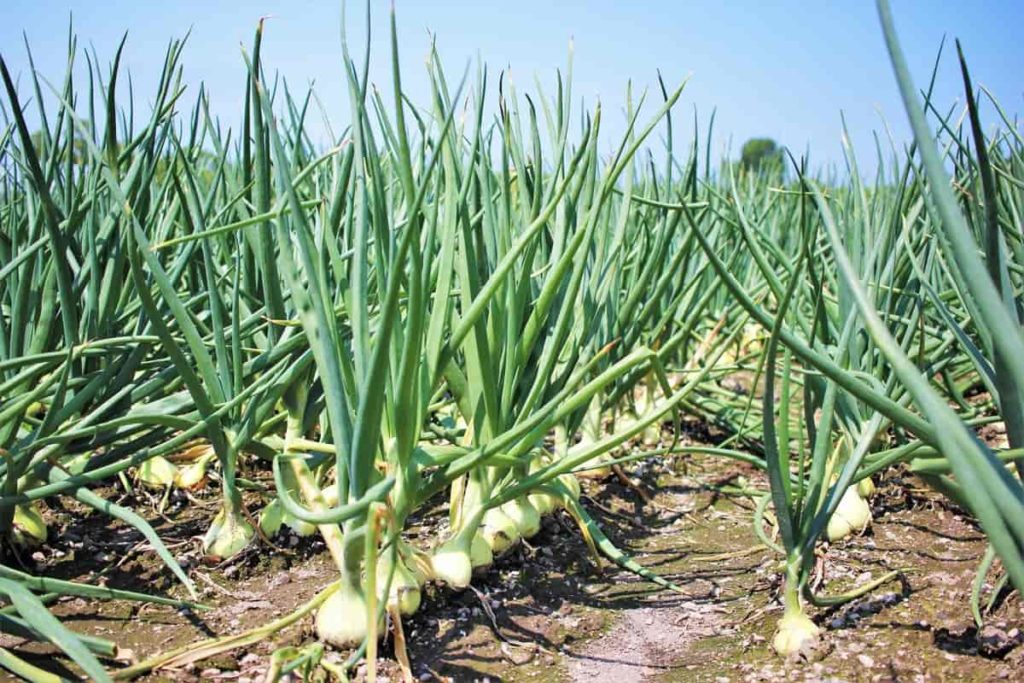
Sowing, transplanting, and harvesting time in different regions in India
| Place | Season | Time of seed sowing | Time of transplanting | Time of harvest |
| Hilly areas | RabiSummer | September-OctoberNovember-December | October-NovemberFebruary-March | June-JulyAugust-October |
| Punjab, Haryana, UP, Bihar, Rajasthan | KharifRabi | June- JulyOctober- November | July-AugustDecember-January | October-NovemberMay-June |
| Orissa and West Bengal | KharifLate KharifRabi | June- JulyAugust- SeptemberSeptember- October | August-SeptemberOctober-NovemberNovember-December | November-DecemberFebruary- MarchMarch- April |
| Maharashtra and parts of Gujarat | Early KharifKharifLate KharifRabi | February- MarchMay- JuneAugust- SeptemberOctober- November | April-MayJuly-AugustOct-NovemberDecember- January | August- SeptemberOctober- DecemberJanuary- MarchApril- May |
| Andhra Pradesh, Tamil Nadu, Karnataka | Early KharifKharifRabi | February- AprilMay- JuneSeptember- October | April-JuneJuly-AugustNovember-December | July- SeptemberOctober- NovemberMarch- April |
Onion yield according to the season
- Onion (Kharif) – 15-20 tonnes/hectare
- Onion (Late Kharif) – 30-35 tonnes/hectare
- Onion (Rabi) – 25-30 tonnes/hectare
Frequently asked questions about growing Onions
Can we grow Onions in summer in India?
Summer / Rabi Onions are generally used for irrigated cropping, resulting in higher yields with larger bulbs. Seedlings are first grown in the nursery. October to November is recommended as sowing time for India’s summer/rabi crop.
Can Onions survive the winter?
It is a little-known fact that many seasoned gardeners aren’t aware of: you can grow Onions (and shallots) in the winter. These extremely hardy plants can survive incredibly cold temperatures with little protection and still provide quality bulbs after bolting in the spring.
How long does it take to grow Onions?
Onion seeds are mainly available throughout the year and are less expensive than sets. However, seeds take longer to germinate. Since Onions take a long time to ripen, you can start them indoors. The average growth rate of an Onion is 100 to 175 days to maturity.
In case you missed it: How To Start Onion Farming, Questions, Answers
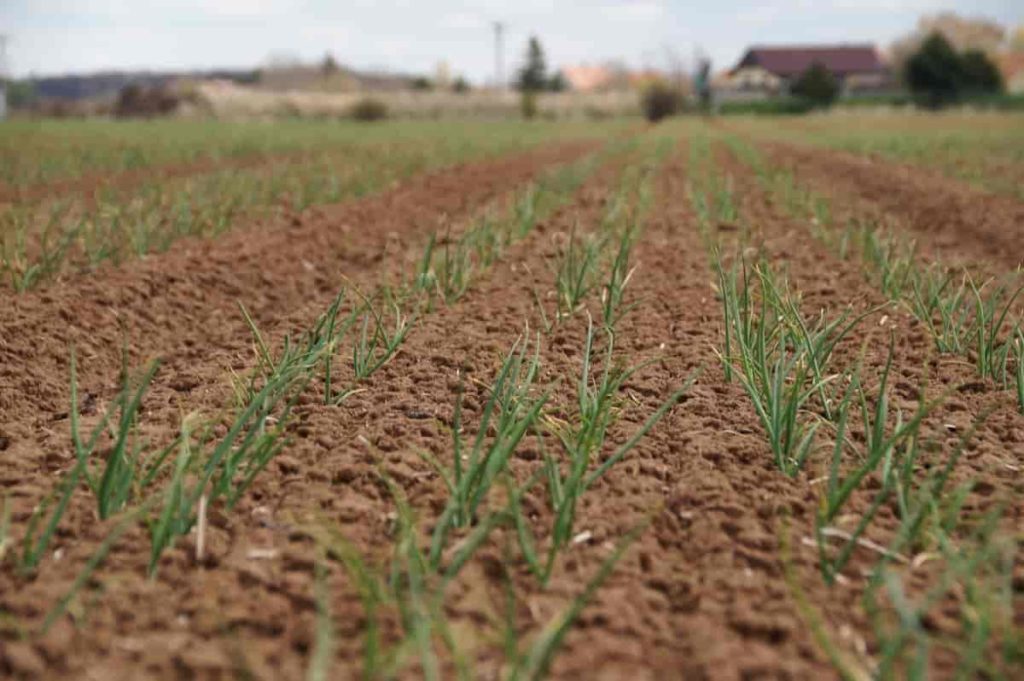
Can I plant Onions in June?
You can plant Onions almost any time of the year (especially if growing green Onions), but your timing will affect the size of the Onions you harvest and when to harvest them. Onions will be prompted to the bulb when the day length in your area is getting the right number of daylight hours for the variety.
Conclusion
Onions are surprisingly easy to grow. They are planted in early spring and harvested from mid-summer to fall. The above information is useful to know about planting time in the Onion crop.
A source: https://www.agrifarming.in
